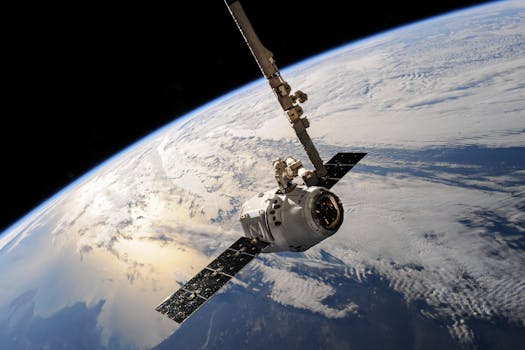
MEO Satellites: Revolutionizing Global Connectivity with Medium Earth Orbit Technology
MEO satellites, or Medium Earth Orbit satellites, are a type of satellite that operates at an altitude of around 2,000 to 36,000 kilometers above the Earth’s surface. This range is higher than Low Earth Orbit (LEO) satellites but lower than Geostationary Orbit (GEO) satellites. MEO satellites are designed to provide a balance between the benefits of LEO and GEO satellites, offering a wider coverage area and lower latency compared to GEO satellites, while also being more cost-effective than LEO satellites.
The use of MEO satellites is becoming increasingly popular due to their ability to provide global coverage and high-speed connectivity. One of the main advantages of MEO satellites is their ability to offer a lower latency compared to GEO satellites. This is because MEO satellites are closer to the Earth’s surface, which reduces the time it takes for signals to travel between the satellite and the ground station. This makes MEO satellites ideal for applications that require real-time communication, such as video conferencing, online gaming, and remote healthcare.
History and Development of MEO Satellites
The concept of MEO satellites has been around for several decades, but it wasn’t until the 1990s that the first MEO satellites were launched. One of the first MEO satellite systems was the Iridium constellation, which was launched in 1998. The Iridium system consisted of 66 satellites that provided global coverage and offered a range of services, including voice and data communication. Since then, several other MEO satellite systems have been launched, including the Globalstar and O3b (Other 3 Billion) systems.
The development of MEO satellites has been driven by the need for global connectivity and the demand for high-speed data services. The use of MEO satellites has also been driven by the need for redundancy and backup systems, particularly in areas where fiber optic cables are not available or are prone to outages. MEO satellites have also been used to provide connectivity in remote and underserved areas, where traditional telecommunications infrastructure is limited or non-existent.
Applications and Benefits of MEO Satellites
MEO satellites have a range of applications and benefits, including providing global coverage, high-speed connectivity, and low latency. They are also used to provide backup and redundancy systems, particularly in areas where fiber optic cables are not available or are prone to outages. MEO satellites are also used to provide connectivity in remote and underserved areas, where traditional telecommunications infrastructure is limited or non-existent.
Some of the key applications of MEO satellites include broadband internet access, mobile communications, navigation, and remote sensing. MEO satellites are also used to provide services such as video conferencing, online gaming, and remote healthcare. The use of MEO satellites is also being explored for applications such as smart cities, IoT (Internet of Things), and autonomous vehicles.
Future of MEO Satellites
The future of MEO satellites looks promising, with several new systems and technologies being developed. One of the key trends in the MEO satellite industry is the use of HTS (High-Throughput Satellites) technology, which enables the provision of high-speed broadband services. Another trend is the use of constellation-based systems, which involve the deployment of multiple satellites to provide global coverage and redundancy.
The use of MEO satellites is also being driven by the need for 5G connectivity and the demand for high-speed data services. The use of MEO satellites is expected to play a key role in the deployment of 5G networks, particularly in areas where fiber optic cables are not available or are prone to outages. The use of MEO satellites is also being explored for applications such as smart cities, IoT, and autonomous vehicles.






